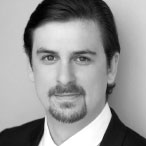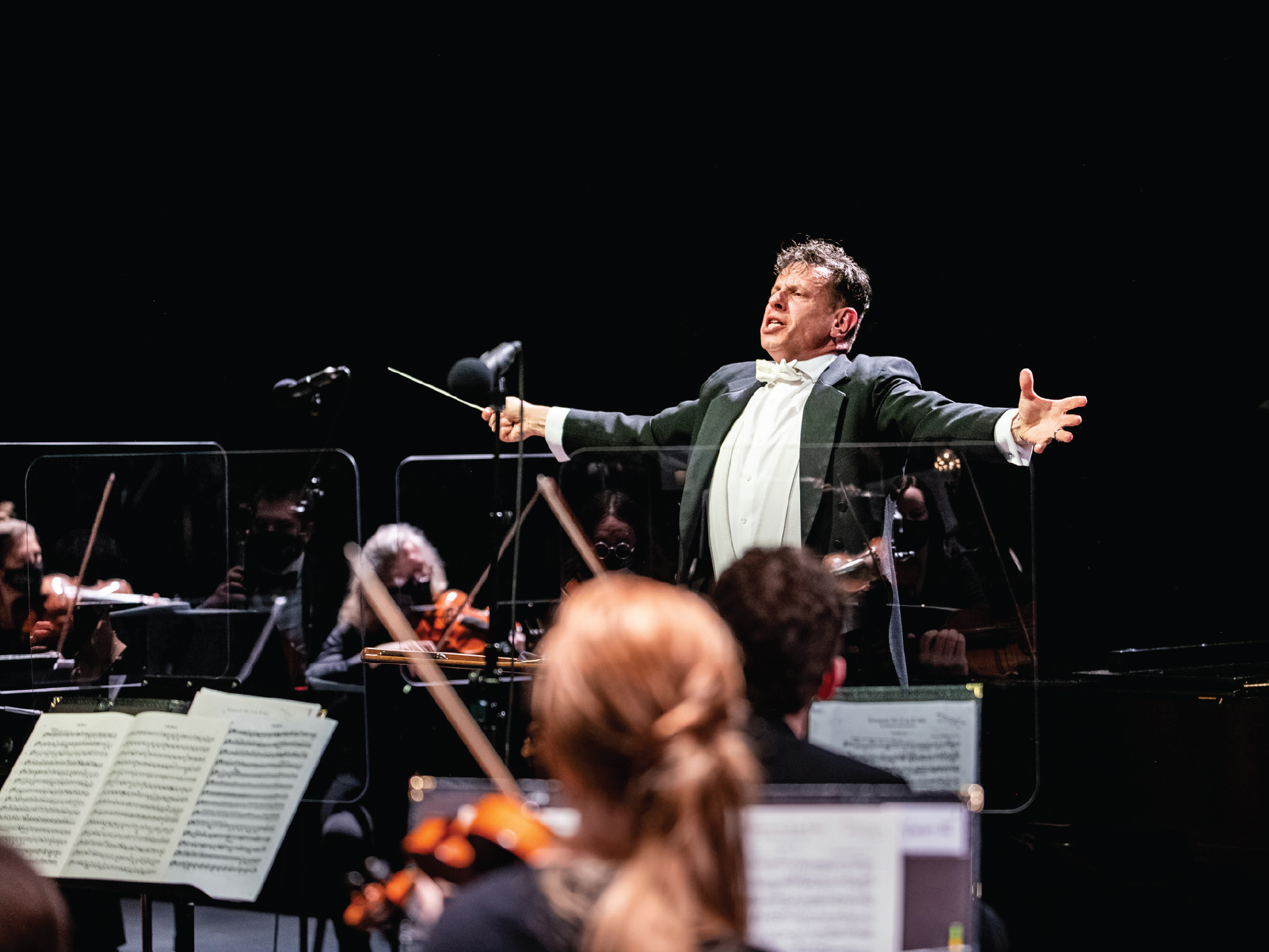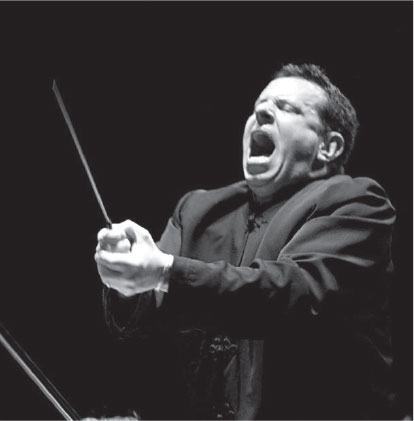Saturday, 18 September 2021
7:30 p.m. MDT
Helena Civic Center
The long-awaited re-opening of in-person concerts begins with the most triumphant celebration of the human spirit – the immortal “Ode to Joy” of Beethoven’s Ninth Symphony. Beethoven’s musical proclamations about community and equality continue to resonate around the world in a time where the power of music is more vital than ever.

Ms. McVey, soprano
Mr. Shankle, tenor
Ms. Kim, mezzo soprano
Mr. Renner, baritone
I. Allegro ma non troppo e un poco maestoso
II. Scherzo: Molto vivace – Presto
III. Adagio molto e cantabile – Andante moderato – Tempo I
VI. Andante maestoso – Allegro energico – Allegro ma non tanto – Poco adagio – Poco adagio, stringendo il tempo – Prestissimo
Performed in German with English subtitles
Currently in his nineteenth season as Music Director of the Helena Symphony Orchestra & Chorale, Maestro Allan R. Scott is recognized as one of the most dynamic figures in symphonic music and opera today. He is widely noted for his outstanding musicianship, versatility, and ability to elicit top-notch performances from musicians. SYMPHONY Magazine praised Maestro Scott for his “large orchestra view,” noting that “under Scott’s leadership the quality of the orchestra’s playing has skyrocketed.”
About the Guest Artists

Soprano Diana McVey is an artist whose consummate skills as both a singer and an actress have quickly made her highly visible in opera, oratorio, and as soloist with symphony orchestras. She has become known for her riveting and moving portrayals of “Countess Madeleine” in Capriccio, “Violetta” in La Traviata, “Contessa” in Le Nozze di Figaro and “Lucia” in Lucia Di Lammermoor. She has sung leading roles with Florentine Opera, Opera Theater of Pittsburgh, Opera Omaha, Opera Dubai, Opera Tampa, Opera Columbus, Lake George Opera Festival, Jacksonville Lyric Opera, Treasure Coast Opera, Opera Naples, and many others.
Ms. McVey is thrilled and grateful to be returning to perform with the Helena Symphony for the seventh time. Other Helena Symphony engagements include the Benefit Concert at Montana Ting: A Night in Italy, Verdi’s Requiem, Puccini’s La Bohème (Musetta), Vaughan Williams’ Dona Nobis Pacem, Brahms’ Ein deutsches Requiem, and Mahler’s Eighth Symphony.
Other engagements include A Night in Italy gala concert with the Southeastern Pennsylvania Symphony Orchestra, Stravinsky’s Pulcinella with the Gateway Chamber Orchestra, Brahms’ Ein deutsches Requiem with the RI Civic Chorale & Orchestra, a gala concert with Opera Tampa celebrating the 100th birthday of Maestro Anton Coppola, Elijah with the Idaho State-Civic Symphony, “Countess Madeleine” in Richard Strauss’ final opera Capriccio with Opera Theater of Pittsburgh, “Adina” in L’Elisir d’amore and “Contessa” in Le Nozze di Figaro with Florentine Opera, and many others. Ms. McVey has appeared with Opera Idaho, Opera Omaha, Opera Tampa, the Music on the Hill Festival (RI), and at Carnegie Hall, among many others. Upcoming engagements include Mendelssohn’s Elijah with the Salisbury Singers, Barber’s Knoxville: Summer of 1915 with the Chamber Orchestra of Barrington at St. John’s, and Vaughan Williams’ Sea Symphony with the Idaho State-Civic Symphony.
Ms. McVey appears courtesy of Wade Artist Management (New York, NY).

Praised for her superb technique, innate musicality and powerful stage presence, Korean-American Mezzo-Soprano Ryu-Kyung Kim performs a wide range of music from Handel to Schönberg and has so far appeared in 11 premier operas. Recent perfromances include the title role as “Queen Lili’uokalani” in Better Gods, as a featured artist in Korea Now concert in Cairo, Egypt, in The Shakespeare Concert at Jordan Hall and Jewett Arts Center, as “Vera Boronel” in The Consul, “Suzuki” in Madama Butterfly, and soloist in Prokofiev’s Alexander Nevsky.
Ms. Kim’s stage successes include the title roles in La Cenerentola and Carmen, “Maddalena” in Rigoletto, “Octavian” in Der Rosencavalier, and “Malika” in Lakmé. Ms. Kim has appeared with the Baltimore Opera, Cleveland Opera, El Paso Opera, Ash Lawn Opera Festival, Opera Orchestra of New York, Virginia Opera, Gotham Chamber Opera, and Caramoor Music Festival, among many others.
As a demanded concert artist, Ms. Kim has appeared in numerous concerts in Isaac Stern Auditorium at Carnegie Hall and in both Avery Fisher Hall and Alice Tully Hall at Lincoln Center, and collaborated with internationally acclaimed orchestras such as National Chorale & Orchestra, Korean Symphony Orchestra and Seoul Philharmonic Orchestra in Korea, Sapporo Symphony Orchestra in Japan, and Staatskapelle Halle and Frankfurter Sinfoniker in Germany.
Ms. Kim appears courtesy of Wade Artist Management (New York, NY).

Making his debut with the Helena Symphony Orchestra, American Tenor Norman Shankle is currently enjoying worldwide acclaim for his portrayals of Mozart and Rossini’s most famous tenors. The Boston Globe called Shankle “a real find, a singer of elegance, grace and conviction,” and the San Francisco Chronicle praised him equally as “clearly a singer to watch.”
Norman began his career with the San Francisco Opera in the Merola Opera Program and as an Adler Fellow. He officially made his company debut as “Valletto” in L’incoronazione di Poppea, and subsequently appeared in SFO’s productions of Tristan und Isolde, Don Carlo, Prokofiev’s Betrothal in a Monastery, Louise, Lucia di Lammermoor, Idomeneo, and Don Giovanni. Mr. Shankle was selected as a winner of the distinguished ARIA award. Other awards include a Richard Tucker Career Grant and the McAllister Award.
International concert experience includes “Carlo” in Rossini’s Armida and “Laios” in Oedipe at the Edinburgh International Festival; Handel’s Saul conducted by René Jacobs at Palais de Beaux Arts, Brussels; “Tito” in Mozart’s La Clemenza di Tito with the Münchener Kammerorchester in Amsterdam; and Britten’s Serenade for Tenor, Horn & Strings with the International Bach Akademie. He has appeared in concert with the Cincinnati Symphony, Houston Symphony Orchestra, San Francisco Choral Society, Essen Philharmonic, Choral Arts Society of Washington, and New Century Chamber Orchestra.
Mr. Shankle appears courtesy of UIA Talent Agency, (New York, NY).

American baritone Tim Renner makes his debut with the Helena Symphony this Season with Beethoven’s Ninth Symphony. He recently performed roles in Carmen, La Boheme, La Favorite, Il Trovatore, Rigoletto, Das Rheingold, and Ariadne auf Naxos. He has performed in Tokyo with the new National Theatre, with Opera Columbus, Opera Tampa, Lyric Opera of Kansas City, and Manitoba Opera. Mr. Renner recently completed his Doctor of Musical Arts Degree in Vocal Performance and Literature at University of Illinois.
Other recent debuts include Vero Beach Opera as “Eisenstein” in their new Fledermaus and with the Ravinia Festival singing five selected “Romances” by Rachmaninoff. Recent concert performances include Carmina Burana and Fantasia on Christmas Carols with the Eastern Symphony Orchestra at Eastern Illinois University, and solos in J.S. Bach’s St. Matthew Passion with Sinfonia de Camera.
Recent awards for Mr. Renner include winner of the Mario Lanza Institute Scholarship, first prize at the S. Livingston Mather Scholarship Competition in Cleveland, and second prize at the Orpheus National Vocal Competition in Muurfreesboro, Tennessee. He was also a participant in Sugar Creek Opera’s Young Artist Program performing Mozart’s Die Zauberflöte.
Mr. Renner appears courtesy of Piper Artists Management (Canton, CT).
Keeping You Safe in the Concert Hall
Due to the recent increase in COVID-19 cases and new variants emerging in Lewis and Clark County and the United States, the Helena Symphony will take necessary precautions to keep our musicians, staff, and audience protected. The Helena Symphony will continue to follow CDC guidelines throughout Season 67 and monitor the daily transmission rates within our county. When the transmission rate is high or substantial, audience members will be required to wear a mask while in the concert hall. On concert nights when the transmission is moderate or low, individuals will be encouraged to wear a mask, but are not required to do so.
Each member of the Helena Symphony Orchestra & Chorale will be tested prior to rehearsals and prior to each concert. This will ensure each musician present on stage is negative for COVID-19. The Helena Symphony will continue to work closely with the county health department and the city of Helena throughout the Season to ensure the safety of our musicians, staff, and audience. If you have questions about how the Helena Symphony will be adapting to the evolving COVID-19 situation this Season, please call our office at 406.442.1860.
About the Program – By Allan R. Scott ©

Parallel Events / 1824
Premiere performance of Beethoven’s Missa Solemnis
Composers Anton Bruckner and Bedrich Smetana are born
First steam locomotive is created
Mexico becomes a republic
First U.S. Presidential election where no candidate received the majority of the electoral vote. House of Representatives later elects John Quincy Adams the 6th U.S. President
J.W. Goodrich introduces rubber galoshes
LUDWIG VAN BEETHOVEN
Born: Bonn, Germany, 16 December 1770
Died: Vienna, Austria, 26 March 1827
Symphony No. 9 in D minor, Op. 124, Choral
The Ninth Symphony is scored for piccolo, two flutes, two oboes, two clarinets, two bassoons, contrabassoon, four horns, two trumpets, three trombones, timpani, triangle, bass drum, cymbal, divided strings, mixed chorus, and soprano, mezzo soprano, tenor, and baritone solos.
Duration: 75 Minutes
Beethoven once described himself as someone “who did everything badly except compose music,” and yet he aroused intense personal devotion not only by his music but by his personality, rough and ill-mannered, violent and wrong-headed though his actions often were. The nature of his personality and the fact he was virtually uneducated, gave his musical utterance a simplicity and a sincerity that are without parallel among the great composers. It is these qualities, combined with his strong sense of humanity and his inexhaustible power of striving for the ideal, that have earned him his unique place in affections of music-lovers of all types.
Dedicating himself principally to composition from the early 1800s, he supported himself partly by public concerts, in which he presented his works and his skill as an improviser, and partly through dedication fees, sales of publications, and generous gifts from patrons. Determined to survive as a free-lance musician, Beethoven eventually ended his career as a performer for full time composing due to the gradual onset of incurable deafness.
Like his musical idol, Handel, Beethoven embodied his own musical era and at the same time contributed to the overall progression of music in technique and artistic form. Unlike Handel (and even Mozart) however, Beethoven did not have the luxury of speed and instantaneous perfection in his composing; he needed to make several drafts and revisions to most of his works. Certain pieces were often started, interrupted by other projects, and finished much later, at times several years later. Beethoven’s large output of works in all genres includes much occasional music, some of which is rather mediocre. In every genre, however, there are works of the greatest mastery, and the finest of them are unmatched in originality and expressiveness. His works include one opera (Fidelio), incidental music (Egmont, The Ruins of Athens), two ballets, nine symphonies, two mass settings (Mass in C and Missa Solemnis), oratorios, including Christ on the Mount of Olives, and other choral works, five piano concertos, a violin concerto, string quartets and quintets, chamber music with winds, sonatas for violin and cello, piano trios, 32 piano sonatas, many variation sets for piano, works for solo and duet piano, dance sets, concert arias and songs, and canons.
What chiefly distinguishes Beethoven from his predecessors is his personal connection to his art. Recognized as the father of the Romantic Era in music (the period between 1820 and the early 1900s), Beethoven is best understood by gaining an insight to his works, particularly his symphonies, string quartets, and the Missa Solemnis.
With Romanticism, the art and the artist are inseparable. This connection between art and artist is the driving force that most music has thrived on for the past two centuries, whereby music strives to attain the unattainable, the ideal, and the larger-than-life.
This is not to suggest that Beethoven surrendered the structures and forms established by Haydn and Mozart; on the contrary, Beethoven is regarded as the link between the Classical Era of form and reason and the Romantic Era of emotion over reason and art for art’s sake.
Beethoven’s own personal ideas, hopes, and faith, or lack of faith, are represented in his symphonic output. He wrestled with his own fate in Symphony No. 5 and he strove to obtain ideal heroism in Symphony No. 3.
Beethoven’s first eight symphonies were composed in twelve years. Another twelve years elapsed between the Eighth Symphony and the Ninth. In the earliest sketches for the Ninth, Beethoven contemplated a purely instrumental finale, but later conceived the idea of introducing voices to sing a setting of An die Freude (To Joy or Ode to Joy), a poem by contemporary German playwright and poet Friedrich Schiller (1759-1805). Considering using voices in a symphony for some time, Beethoven actually started sketching the Ode to Joy theme thirty years before the final symphony was completed in 1824. After almost 200 sketches and six and a half years, he completed the work.
The work was actually commissioned by The London Philharmonic Society; however, Beethoven was persuaded to give the first performance of the new symphony in his home city of Vienna. For several months during the initial compositional stages, he contemplated writing two works: an “English Symphony” for the London commission and a “German Symphony” for the Vienna performance. The works seem to merge together to form one work and The Philharmonic Society received the Ninth a year after it had been heard in Vienna.
The Ninth premiered on 7 May 1824 in Vienna during a lengthy performance that also included three movements of Beethoven’s Missa Solemnis and the premiere performance of The Consecration of the House Overture. The Ninth is not a flawless work. Much of the music for the singers, woodwinds, and often the strings was too demanding for the musicians in Vienna at the time and transitions were awkward. Beethoven ignored the requests by the performers to alter the score. Despite the shortcomings in the orchestra and chorus at the premiere (when the sopranos could not reach the high notes as written they simply did not sing!), Beethoven had proven himself to be at the height of his creative powers. While the composer did not actually conduct the performance, he stood on stage attempting to lead the orchestra, soloists, and chorus.
The audience was overwhelmed! Beethoven, completely deaf and trapped by only the sounds in his mind, did not realize that the music ended and the applause had begun. As a soloist turned the ailing composer to face the audience, the crowd erupted. The police had to be called to ensure that order was maintained. The critics for the most part agreed that Beethoven had launched a new era of symphonic writing; however, they were not entirely sold on the use of voices or percussion instruments in the final movement. Perhaps by adding words it would seem on the surface to remove the intangible elements of a symphony and therefore to destroy the autonomy of music as an independent language. After a more careful look, it is clear that Beethoven only enhances the Romantic motto of searching for the ideal, as Schiller’s poem embodies ideals that are far too remote for the German people of 1824, and maybe even too ideal for society at large today.
The overall musical idea of the Ninth stems from a basic conflict between D major and D minor struggling for supremacy, where D major will ultimately claim victory over D minor. Moreover, it is the quest for D major amongst the constant pulling of the tonalities of D minor. The first three movements are titanic in scope and concept, particularly the opening movement. It is a tempest, derived from the innermost secrets of a storm-tossed man’s intellect and spirit culminating in jubilant outbursts of hopes for mankind.
The Symphony begins with the uncertain interval of an open fifth (meaning it is undetermined whether it is a major or minor chord – joy or doom), suggesting some mystical void that anticipates a conclusion. The first eruption of the entire orchestra states the dark tonalities of D minor and for the most part it remains there for the entire movement. Beethoven notes in a sketchbook that the first movement “reminds us of our despair;” it is meant to be disruptive and a search for order.
In the traditional symphonic model (which Beethoven followed in his previous eight symphonies), a more contemplative slower movement follows the opening movement. However, in order to keep the audience on the edge of their seats or with agitation or anticipation, Beethoven inserts a lengthy scherzo (dance-like) movement (usually the third movement of a symphony). The hammer-pounding octaves of its opening were said to have occurred to the composer as he once stepped from darkness into a sudden light. The scherzo is composed in a complex form (a fugue in the sonata form along with the traditional Trio) that exudes a physical exuberance and energy.
The third movement, the Adagio molto e cantabile, encounters a peace after the storm – perhaps a spiritualizing of all the sorrows of the world. It is one of the most sublime compositions that Beethoven, or anyone else, ever wrote. Its “impression of solemn profundity,” as described by historian Richard Rodda, is enhanced by being placed between the energetic second movement and the climatic Finale. The third movement is a kind of theme and variations but with a second theme inserted between the original melody and its variations. Beethoven writes that the Adagio movement is “too tender,” suggesting that it is too beautiful for this world, bringing us closer to his search for utopia.
At this point no real resolution of the opening turmoil is apparent and Beethoven resolves the initial conflict in the final movement. The Finale rudely awakes the sublime world of the third movement with a disturbing fanfare and orchestral allusions to the Joy theme while summarizing the previous three movements and recalling the battle between the tormented first section and the peaceful third. The cellos and basses then lead the rest of the orchestra with the complete playing of the Joy theme.
Beethoven believed he had one major obstacle to overcome before he could have the words of Schiller enter the Symphony: how to bridge the instrumental and the vocal aspects. He concluded that a recitative, the technique used in opera to bridge one movement to the next, would serve as the connecting point. For the recitative, Beethoven uses his own words (“O Freunde, nicht diese Tone” / “O friends, not these sounds”) to introduce Schiller’s Ode to Joy. The composer suggests that Schiller’s words will resolve the previous turmoil of the dark instrumental fanfares that just occurred, and more importantly resolve what Beethoven scholar Donald Tovey says the previous three movements symbolize: “tragedy, satiric drama, and beauty of an order too sublime for a world of action.”
From the introduction of the Joy theme onward, the movement builds in over a series of variations on the Joy theme, using about one-third of the 96 lines of Schiller’s poem. Beethoven outlined the Finale as a “song and dance” and in the variations that follow the entrance of the chorus, he explores several dance and march rhythms. The Joy theme is written in almost a dozen variations through the course of the movement, each climax leading to the next. In accordance with his compositional style of the 1820’s Beethoven included a double fugue where the chorus is simultaneously proclaiming two lines of the text representing the triumph of Joy and the religious connotations of mankind being embraced as brothers under God. For opera composer Richard Wagner, the combined forces of voices and instruments in the Beethoven Ninth marked the birth of the first great musical drama.
Despite Beethoven’s continual struggle with God and with acceptance of his fate, Beethoven did embrace a conception of God as a universal father and mankind as children of God. It was because of this belief that Beethoven never relinquished the prophetic vision of the potential for society. In that sense the Ninth is nothing less than a paean to the brotherhood of man and a work of great optimism that asks, or even demands, that the city of man can and should be as peaceful as the city of God. French writer Victor Hugo called utopia “the truth of tomorrow” and French poet Alphonse de Lamartine wrote that “utopias are often only premature truths.” Beethoven’s Ninth is calling for society to search for this utopia, this “truth of tomorrow.” For Beethoven and Schiller, utopia was Elysium, the heaven of Greek mythology, where brothers are free from struggle and protected by a benevolent god.
To Beethoven, the ideal of freedom was betrayed by Napoleon Bonaparte and terminated by the restoration of authoritarian rule throughout Europe by the Congress of Vienna (1814-1815). The interests of the individual and those of society could never be balanced in Beethoven’s mind. In addition to the religious impetus for Beethoven to write the Ninth, “his refusal to accept the finality of the failure,” as biographer Maynard Solomon explains, of the revolution to come to Germany also served as a motive for the Ninth. In part, it was this sense of doom for mankind that caused Beethoven to proclaim freedom in a repressed society and what attracted him to Schiller’s poem. Although it was seen as propaganda for the sentiments of the French Revolution, Schiller’s poem represented for Beethoven a philosophy of love and a religion of brotherhood far more meaningful than the Church. The poem prompted Beethoven at the age of 20 to become a Freemason, an organization dedicated to the ideals Schiller promotes.
Is the Ninth as autobiographical as Beethoven’s Third or Fifth Symphonies? While it is impossible to know what personal experiences of Beethoven’s directly influenced the Ninth, Maynard Solomon suggests it could be Beethoven’s yearning for the reconstruction of a splintered family, for an idyllic past, for loving brotherhood, for an extended moment of pure joy, or for eternal life.
Today the Ninth Symphony has become a symbol for countless societies, cultures, religions, and governments. German nationalists, French republicans, Communists, and Catholics have used it. When democracy toppled the symbols of the Cold War with the destruction of the Berlin Wall, the Ninth was performed. Hitler celebrated his birthdays with it, yet it was played by prisoners in German concentration camps. The work has come to symbolize the pursuit of wealth in Hong Kong and the communist government of China uses the Ninth as a motto of the Marxist slogan “victory through revolutionary struggle.” As the Chinese politicized the Ninth Symphony, the Japanese socialized it, playing it in karaoke bars. Even the racist government of Rhodesia ironically made the Ninth its national anthem.
When the United States was attacked by terrorists on 11 September 2001, almost everything in the country stopped – every major sports team postponed games, the stock market closed for days, and many forms of transportation were interrupted. The only thing that seemed appropriate was music, and orchestras throughout the country and indeed at Ground Zero in New York performed Beethoven’s Ninth, his final cry of hope and optimism for mankind.
Above all, Beethoven understood, identified with, and captured Schiller’s idea of a universal love. Musicologist Bernt von Heissler states that the Ninth is “the bond that unites all people; it establishes a correlation between individual happiness and the perfection of society and it attempts to change everything and create a paradise on earth.” Music historian Edward Downes puts it best: the Ninth Symphony is “one of the greatest achievements of the human spirit. It stands taller, strides longer, reaches higher toward the Infinite than anything remotely like it.” If we stop sharing in Beethoven’s hope for utopia or cease believing in humanity’s potential for greatness, we are left with little recourse against the terrors facing civilization.









